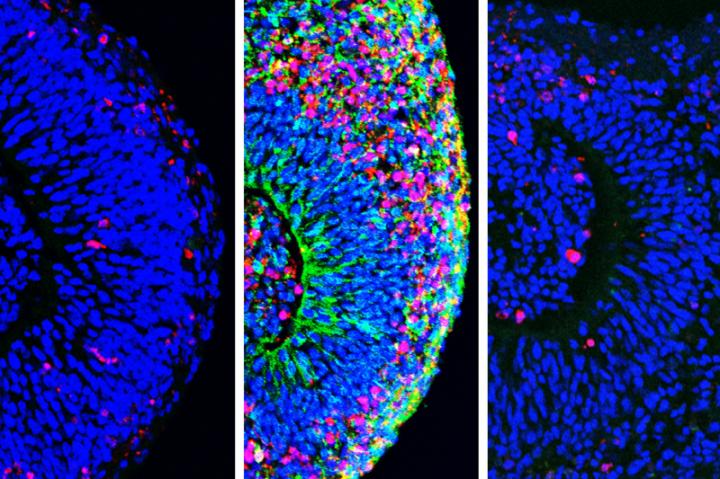Improved Miniature Brain Model Reveals How Zika Virus Infects Brain Cells

These are organoids before (left) and after exposure to Zika (center), and after treatment (right). Credit: UCLA Broad Stem Cell Research Center/Cell Reports
Study in a Sentence: Researchers optimized tissue culturing conditions to efficiently and reliably make miniature brain models called brain organoids from stem cells with minimal variability. Compared to previous methods, the authors controlled the cell number, used a specialized culture dish, and added a critical human brain growth factor called LIF.
Healthy for Humans: They used the brain organoids produced by their method to study how Zika virus infects and damages brain tissues as well as to identify novel compounds to block the infection.
Redefining Research: Unlike previous brain organoids, the model produced in this study resembles the layered structure in the human brain and exhibit network-like communication functions as in human brain tissues.
References
- Watanabe M, Buth JE, Vishlaghi N, et al. Self-organized cerebral organoids with human-specific features predict effective drugs to combat Zika virus infection. Cell Rep. 2017;21:517-532. doi: 10.1016/j.celrep.2017.09.047.








